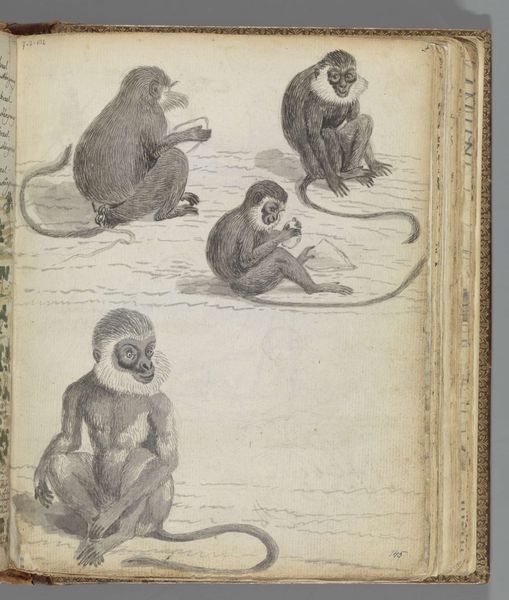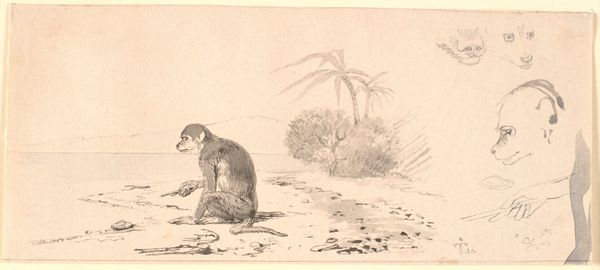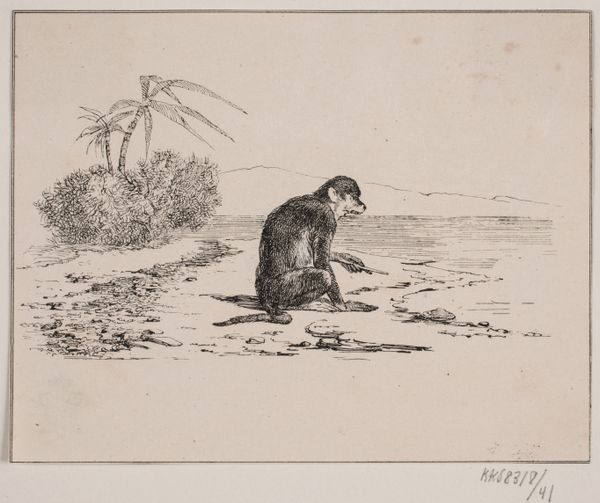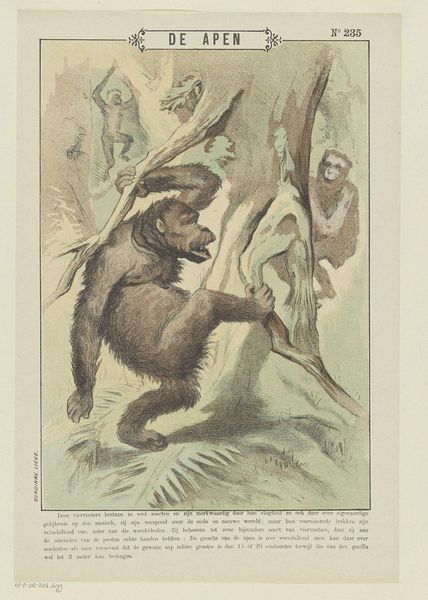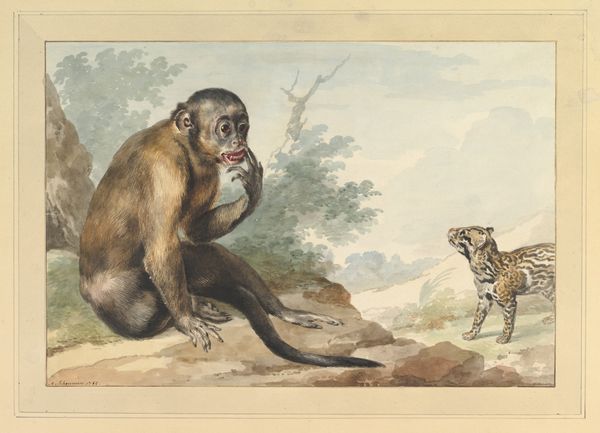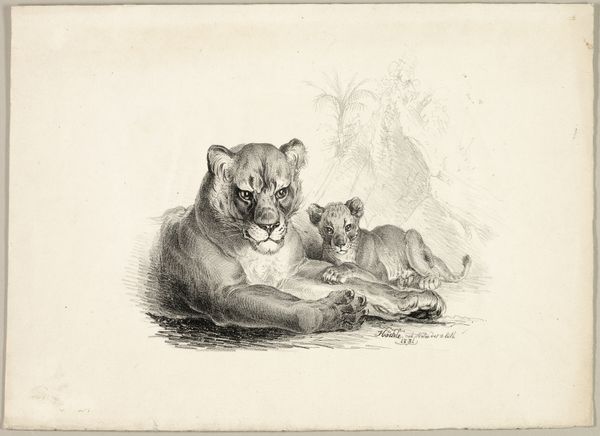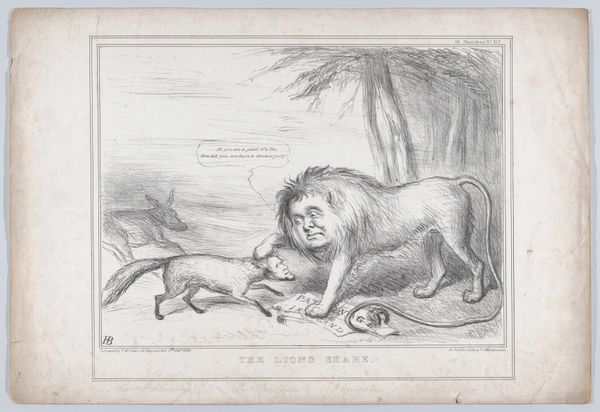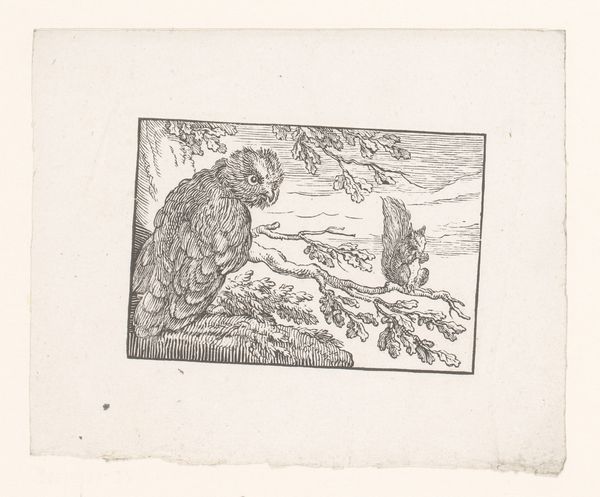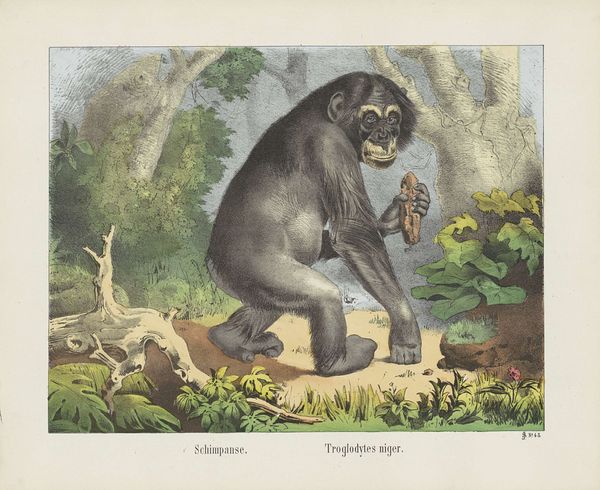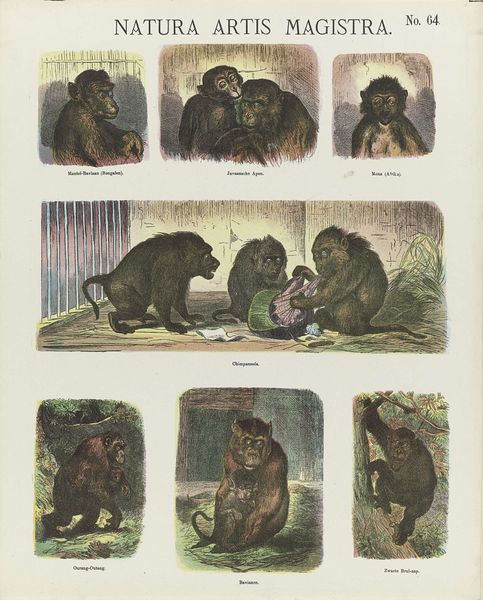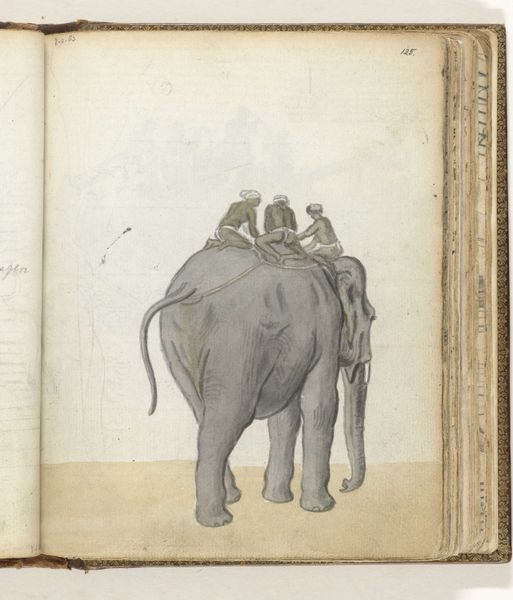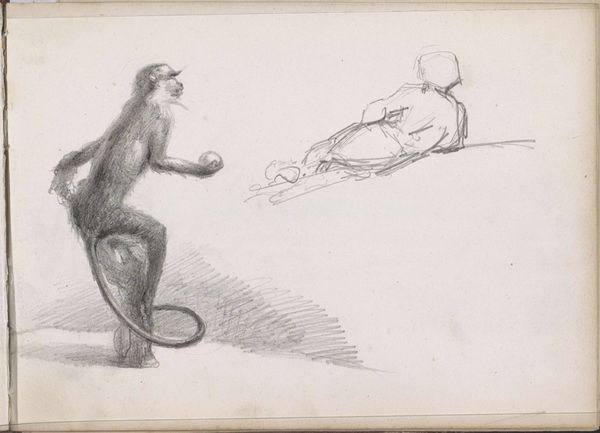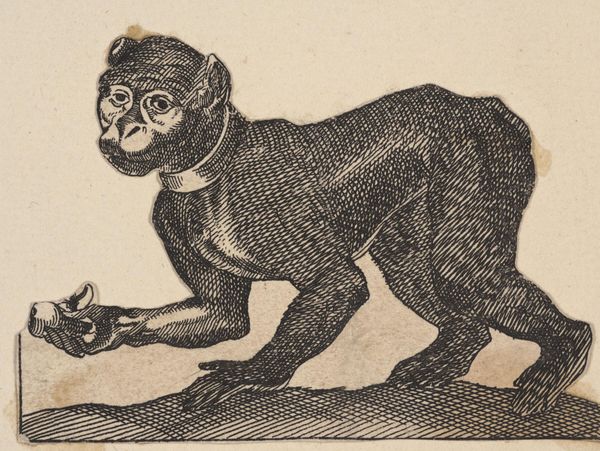
drawing, paper, ink, pen
#
portrait
#
drawing
#
paper
#
11_renaissance
#
ink
#
coloured pencil
#
pen
#
naturalism
#
watercolor
Dimensions: height 195 mm, width 155 mm
Copyright: Rijks Museum: Open Domain
Editor: So, this is "Rolleway op Ceylon," possibly from 1785-1786, by Jan Brandes. It seems to be pen, ink and watercolor on paper, with multiple images of monkeys on a single page. What do you see in this piece, looking beyond just the depiction of primates? Curator: Well, immediately my attention is drawn to the materials themselves and their implications. Consider the paper, likely hand-made, the inks and watercolors painstakingly produced, and the pen itself. Each choice speaks to the means of production during that era. This wasn't a mass-produced image, but a carefully crafted document, right? Editor: Yes, definitely. It seems like someone meticulously documenting something they saw, probably on location. Curator: Exactly. This highlights the role of the artist as a recorder, but also a producer embedded in the colonial context of Ceylon – now Sri Lanka. The artist’s labor is directly tied to the act of observing and cataloging the natural world for European audiences. Think about what that means in terms of power dynamics and resource extraction. The 'Rolleway' becomes a commodity, an object of knowledge to be consumed. Editor: I see. So, it’s not just about the monkeys, but about the whole system of observation and how this artwork itself is an artifact of colonial trade and scientific ambition. Curator: Precisely! The image, rendered with such detail, served as visual information for people who wouldn't have the opportunity to see this species first-hand, creating a demand for future natural history illustrations or even the animals themselves. Does this change how you view it? Editor: It definitely gives me a new perspective on the materials and process. It's not just a pretty drawing; it's a tangible result of colonial power and the consumption of knowledge. Curator: It’s all about understanding the layers of production, circulation, and consumption surrounding even seemingly simple images.
Comments
No comments
Be the first to comment and join the conversation on the ultimate creative platform.
